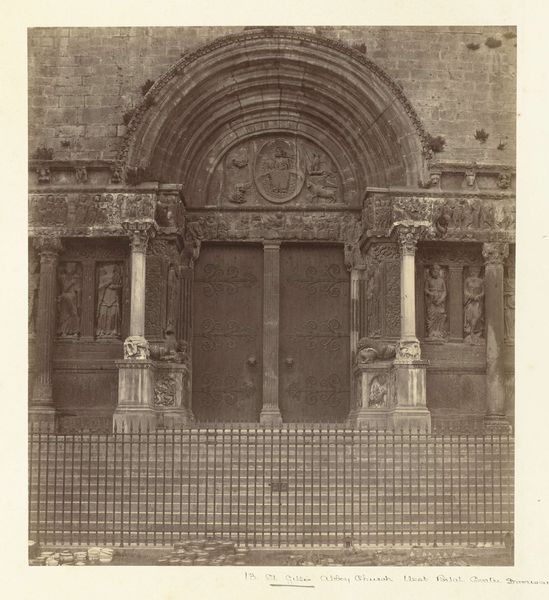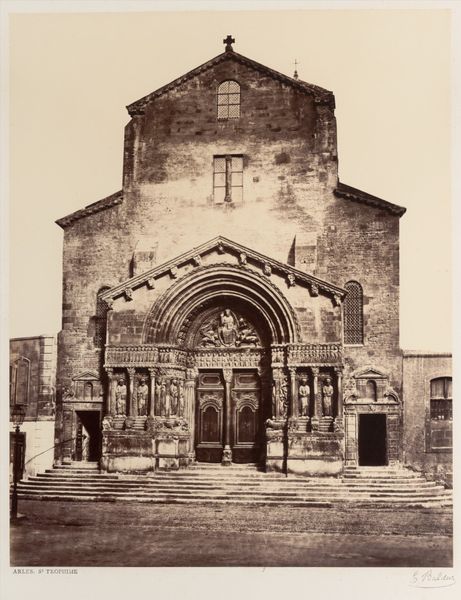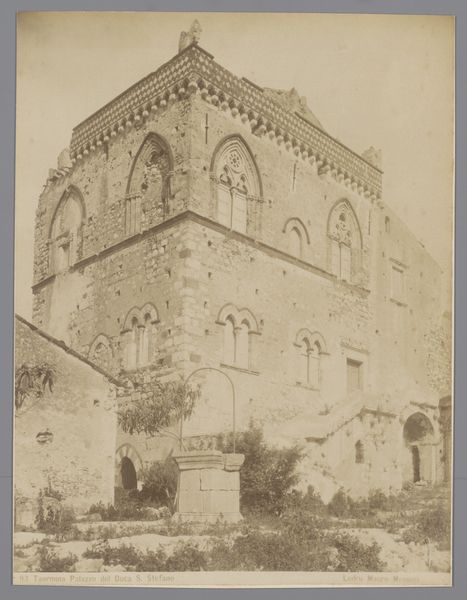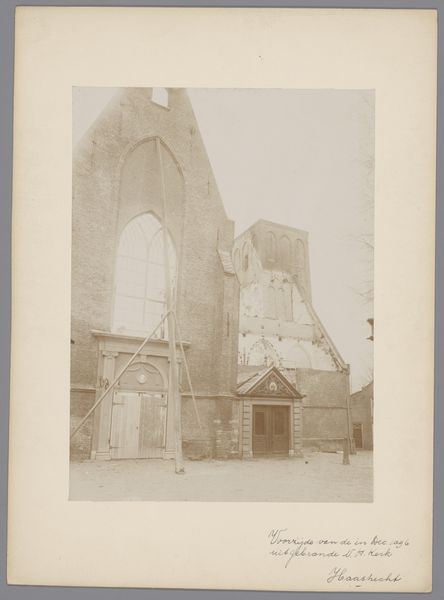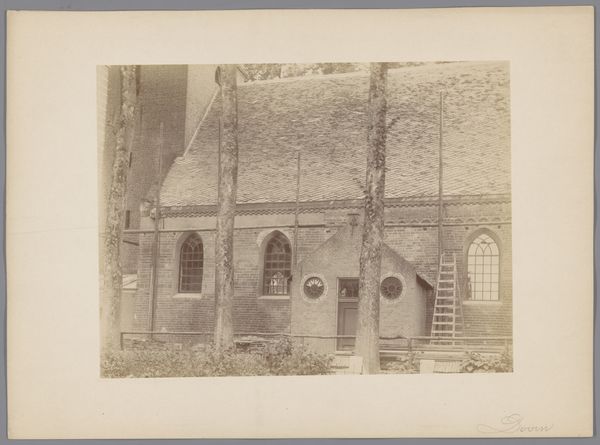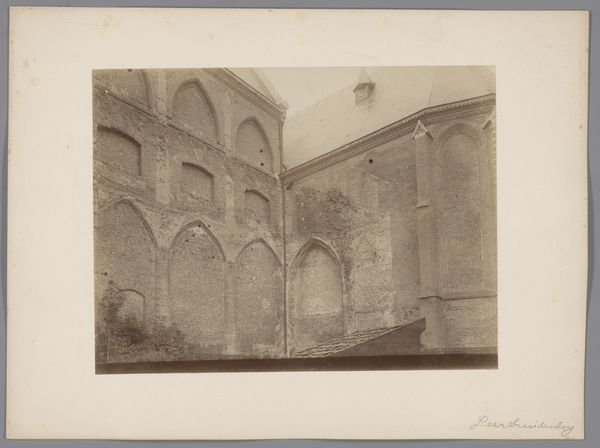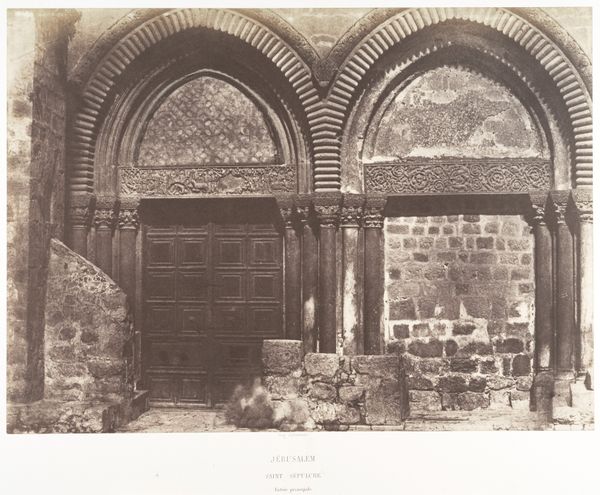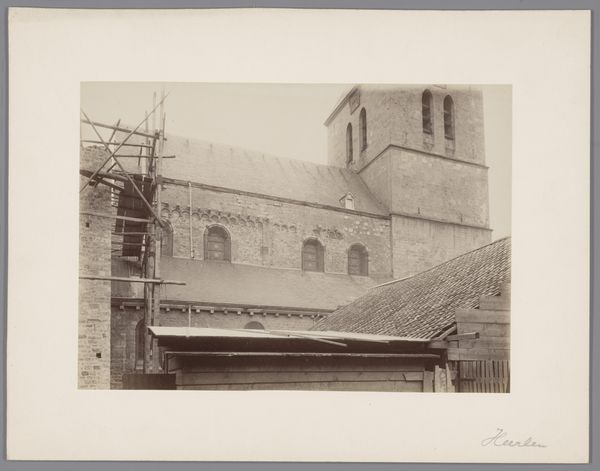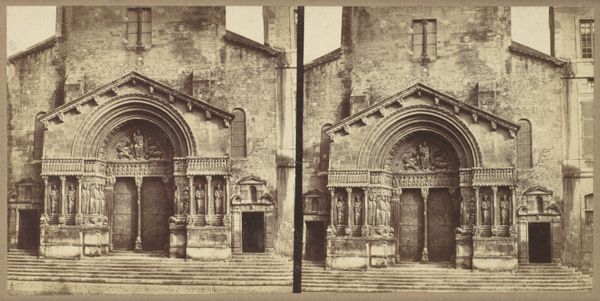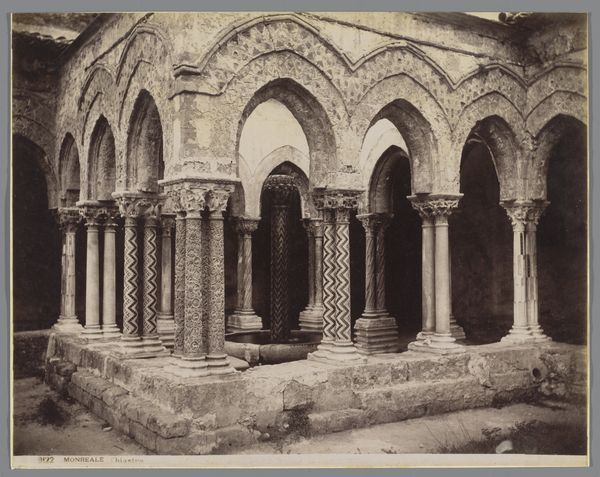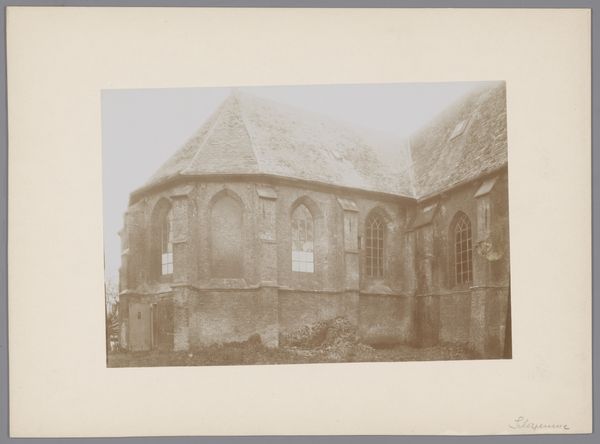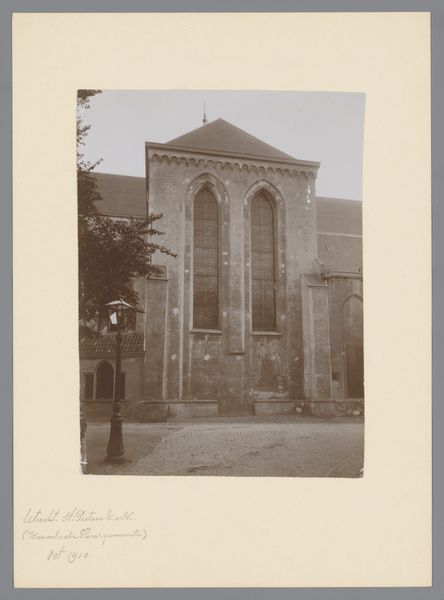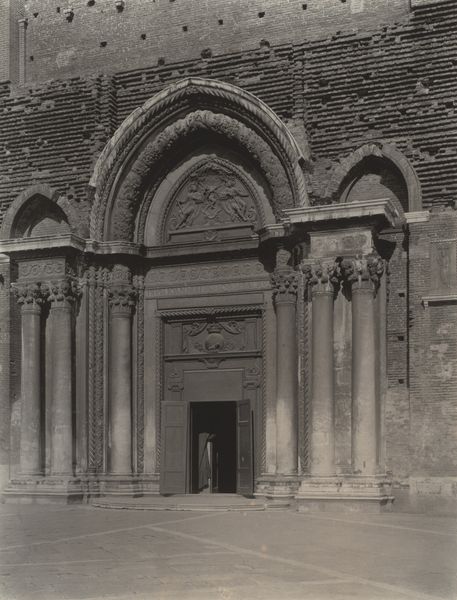
print, photography, architecture
# print
#
landscape
#
historic architecture
#
photography
#
romanesque
#
19th century
#
architecture
Dimensions: Image: 34.5 x 42.9 cm (13 9/16 x 16 7/8 in.) Mount: 46 x 60.5 cm (18 1/8 x 23 13/16 in.)
Copyright: Public Domain
Curator: Looking at Edouard Baldus's photograph, taken in 1853, we see the facade of the abbey church of Saint-Gilles in France. Editor: My first impression is one of incredible age and solidity. The stone seems almost softened by time, a silent monumentality that speaks to centuries of history. Curator: Indeed. Baldus was commissioned by the French government to document significant architectural landmarks, often focusing on those impacted by modernization and urbanization. Photography at the time allowed the State to protect and revive the architectural treasures. This particular image is striking because it captures a medieval structure transitioning into the modern era, through a relatively new artistic medium. Editor: The way Baldus frames the Saint-Gilles's facade emphasizes its role as a public, almost civic, monument, one with complex social significance. Look at the positioning: it’s straight on, without romantic embellishment, offering what feels like an objective rendering. But who was that public and what was that significance? Curator: This Romanesque facade presents a fascinating visual vocabulary steeped in religious and social narratives. The carved tympana, the sculpted figures flanking the doorways—these aren't just decorations. They communicated stories, beliefs, and hierarchies within the medieval world. Furthermore, what message were the French authorities and Baldus were trying to convey through capturing it in the nineteenth-century context? Editor: Precisely! Considering the medium—photography—and the context in which the photo was captured allows one to ponder on ideas surrounding preservation and historical narratives. And the composition itself – a straight shot – reinforces this aura of a neutral historical record. Was it really objective, though, or just aspiring to be? Was the building’s role the same during the mid-19th century and today? Curator: Exactly. As viewers today, we are drawn to interpret this scene through our own lenses, shaped by current understandings of history, power, and representation. How does viewing it affect people's views on nationalism and class differences? Editor: I’d say that examining this image allows us to explore how the cultural significance of spaces, in this case photographed in the mid-19th century, are in dialogue with current-day intersectional understandings of race, identity, or socio-economic backgrounds. Curator: And this opens a broader conversation, about who has the power to document and to shape those historical narratives we all interact with today.
Comments
No comments
Be the first to comment and join the conversation on the ultimate creative platform.
